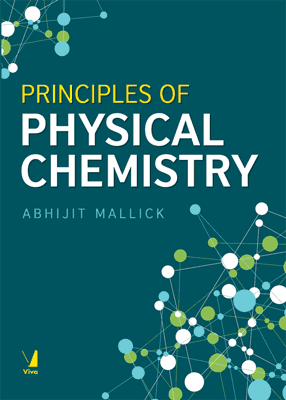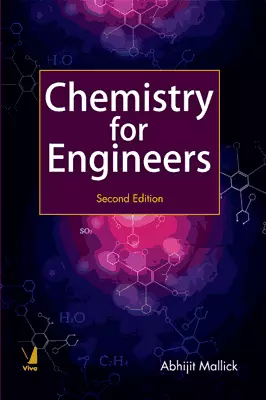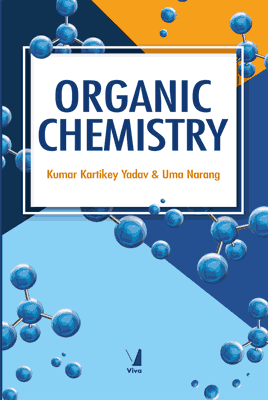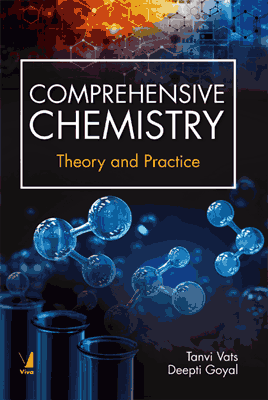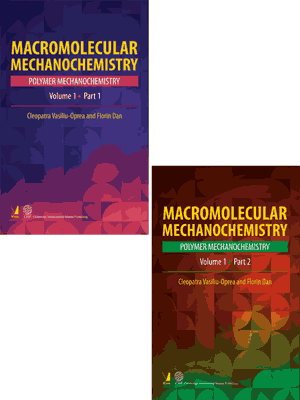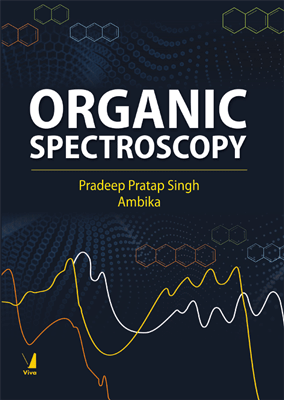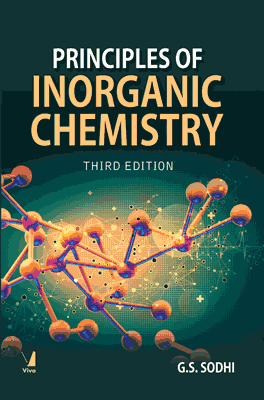Principles of Physical Chemistry
Principles of Physical Chemistry
₹805.50 ₹895.00 Save: ₹89.50 (10%)
Go to cartISBN: 9789387925014
Bind: Paperback
Year: 2018
Pages: 792
Size: 172 x 242 mm
Publisher: Viva Books Originals
Sales Territory: Worldwide
Description:
This book is specially designed for B.Sc. chemistry honours degree students. However, it will be helpful to postgraduate students also. This book focuses on the fundamental aspects of physical chemistry, like chemical thermodynamics, liquid and gaseous states of matter, electrochemistry, phase equilibria, colligative properties, etc. Surface chemistry and colloid chemistry have been discussed in detail. Detailed discussions of photochemistry, chemical kinetics and solid state chemistry are the assets of this book. The book also highlights nuclear chemistry, chemical bonding and catalysis. The appendix contains a collection of reference tables. Different types of questions and numerical problems have been included at the end of almost every chapter.
Contents:
Acknowledgements
Preamble
Chapter 1: Ideal Gases • Introduction • Gas Laws • Kinetic Theory of Gases • Derivation of Kinetic Energy • Equipartition of Energy • Collision Frequency (Z) • Mean Free Path • Viscosity of Gases • The Barometric Distribution Law • Heat Capacities of Gases • Solved Problems • Exercises
Chapter 2: Real Gases • Determination of Density of Vapour • PV?Isotherm of Ideal Gas Isotherm • PV?Isotherm of Real Gas • Critical Point • Law of Rectilinear Diameter • Compressibility Factor • Van der Waals Equation • Dieterici Equation of State • Berthelot Equation of State • Kamerlingh-Onnes Equation (The Virial Equation) • Solved Problems • Exercises
Chapter 3: The Liquid State • Surface Tension • Viscosity of Liquid • Exercises
Chapter 4: Solid State Chemistry • Crystallography • Unit Cell • Fundamental Laws of Crystallography • Miller Indices and Interplanar Spacing • Bragg's Law • Point Imperfections • Non-Stoichiometric Defect • Schr?dinger Wave Equation, Energy States and Fermi Energy • Sommerfeld Theory • Band Theory of Solids • Conductors, Semiconductors and Insulators • Intrinsic Semiconductors • Conduction Mechanism in an Extrinsic Semiconductor • Compound Semiconductor • Solved Problems • Exercises
Chapter 5: Chemical Bonding • Atom and Molecule • Atomic Spectra • Filling up of Atomic Orbitals by Electrons • Matter Waves and Schr?dinger Wave Equation • Uncertainty Principle from Schr?dinger Wave Equation • Validity of Neil Bohr's Theory • Concept of Molecular Orbital • Characteristic Features of Molecular Orbital (MO) Theory • Characteristic Features of Valence Bond (VB) Theory • Periodic Table • Chemical Bond • Solved Problems • Exercises
Chapter 6: Chemical Thermodynamics • Introduction • Zeroth Law of Thermodynamics • State Function • First Law of Thermodynamics • Internal Energy (U) • Enthalpy (H) • Conclusions of 1st Law of Thermodynamics • Equation of State • Work • Specific Heat • P?V?T Relations in Adiabatic Process • Polytropic Process • Calculation of Work • Reversible and Irreversible Processes • Heat Engine and Entropy • Entropy: A State Function • Second Law of Thermodynamics • Third Law of Thermodynamics • Calculation of Entropy • Other State Functions • Gibbs Helmholtz Equations • Condition of Spontaneity for Different Chemical Reactions • Phase Transition Clausius-Clapeyron Equation • Maxwell Relations • Joule-Thomson (JT) Effect • Fugacity • Dependence of Specific Heat on Volume and Pressure • Partial Molar Quantities and Gibbs-Duhem Equation • Thermodynamic Properties of Ideal Gas Mixture • Van?t Hoff Equation • Thermochemistry • Solved Problems • Exercises
Chapter 7: Thermodynamics Part-II • Properties of Fluids and Equation of State • Thermodynamic Properties • Energy in Flow Process • Power Cycles • Refrigeration Cycle • Solved Problems • Exercises
Chapter 8: Statistical Thermodynamics • Molecular Partition Function • Translational Partition Function • Rotational Partition Function • Vibrational Partition Function for Diatomic Molecule • Electronic and Overall Partition Function • Canonical Partition Function • Partition Function and Entropy • Helmholtz Energy • Gibbs Free Energy • Average Chemical Potential • Ideal Gas Law • Internal Energy and Enthalpy • Heat Capacities • Partition Function and Equilibrium Constant • Solved Problems
Chapter 9: Chemical Kinetics • Introduction • Fundamental Postulates • Molecularity and Order • Irreversible 1st Order Reactions • Irreversible 2nd Order Reactions • Irreversible 3rd Order Reactions • Irreversible Zero Order Reaction • Examples of Negative Order, Fractional Order Reactions and Catalyst • Irreversible nth Order Reaction • Methods for Determining Order of a Reaction • Significances of Half-life Period (t1/2) • Elementary Reactions • Study of Reaction Mechanism • Mechanism to Explain Unimolecular Reaction (Lindemann Hypothesis) • Kinetic Study of Some Special Reactions • Theory of Reaction Rate • Factors Influencing the Reaction Rate • Solved Problems • Exercises
Chapter 10: Catalysis • Introduction • Classification • Autocatalysis • Acid and Base Catalyzed Reactions • Enzyme Catalyzed Reaction • Promoters and Inhibitors • Theory of Homogeneous Catalyst System • Theory of Heterogeneous Catalyst System • Primary Kinetic Salt Effect • Exercises
Chapter 11: Electrochemistry • Theory of Electrolytes • Electrolysis • Electrolytic Conductance of Electrolytes • Kohlrausch's Law • Mobility • Applications of Kohlrausch's Law • Transport Numbers of Ions • Conductometric Titrations • Solved Problems • Exercises
Chapter 12: Electrochemical Cell • Electrochemical Cells and Electromotive Force • Thermodynamics of Electrochemical Cells • Nernst Equation for Single Electrode Potential and Electrochemical Cell • Classification of Electrodes • Reference Electrodes • Applications of Single Electrode Potential • Concentration Cells • Decomposition Voltage • Overvoltage • Accumulators • Fuel Cell • Solved Problems • Exercises
Chapter 13: Ionic Equilibria • Debye-H??ckel Limiting Law • Acids and Bases • Levelling Effect of Solvent • Ionic Product of Water • pH • Dissociation Constant • Salt Hydrolysis • Indicators • pH-metric Titration • Solubility Product • Solved Problems • Exercises
Chapter 14: Chemical Equilibrium • Law of Mass Action • Homogeneous System • Heterogeneous System • Le Chatelier's Principle • Combination of Equilibria • Van?t Hoff Isochore • Solved Problems • Exercises
Chapter 15: Phase Equilibria • Phase Rule • One-Component System • Ideal Liquid-Vapour System • Gas-Liquid System • Homogeneous Two Component Liquid-Liquid System • Partially Miscible Liquid Solutions • Partition Coefficient or Distribution Coefficient • Liquid-Solid Binary System • Binary Phase Diagram for Solid Solutions • Three Phase Reactions and Invariant Point • Precipitation Reactions • Iron-Carbon System • Ternary System • Exercises
Chapter 16: Dilute Solutions • Introduction • Lowering of Vapour Pressure • Elevation of Boiling Point • Depression of Freezing Point • Osmotic Pressure • Determination of Activity Coefficient • Reverse Osmosis (RO) • Key Concepts on Osmosis • Solved Problems • Exercises
Chapter 17: Surface Chemistry: Adsorption • Introduction • Gibbs Equation for Adsorption Isotherm • Change in Work Function in Adsorption Process • Freundlich Adsorption Isotherm • Langmuir Equation of Adsorption Isotherm • Brunauer, Emmett and Teller (BET) Equation • Adsorbate-Adsorbate Interaction • Characteristics of Adsorption • Pore Size Determination • Applications of Adsorbents • Exercises
Chapter 18: The Colloidal State • Definition • Classification of Colloids • Properties of Colloidal Solution • Coagulation and Flocculation • Sedimentation of Colloidal Solution • Electrical Double Layer • Gold Number and Protection of Colloids • Emulsifier • Destabilization of Colloidal Solution • Exercises
Chapter 19: Photochemistry • Introduction • Laws of Photochemistry • Photochemical Rate Equation • Types of Photochemical Processes • Photochemical Equivalent • Photochemical Equilibrium • Franck-Condon Principle • Fluorescence and Phosphorescence • Chemiluminescence • Photochemical Dissociation Reactions • Photochemical Cyclization Reactions • Photochemical Reduction Reactions • Photosensitization Reactions • Solved Problem • Exercises
Chapter 20: Nuclear Chemistry • Introduction • The Nucleus • Nuclear Stability • Natural Radioactivity • Radioactive Decay Kinetics • Radiocarbon Dating • Radioactive Series • Nuclear Fission and Fusion • Artificial Radioactivity • Applications of Radioactivity • Solved Problems • Exercises
Appendix
The Periodic Table
Bibliography
Index
About the Author:
Abhijit Mallick is an Associate Professor in the Department of Chemistry, Academy of Technology, affiliated to Maulana Abul Kalam Azad University of Technology, formerly known as West Bengal University of Technology. He completed his B.Sc. in chemistry honours from Ramakrishna Mission Vivekananda Centenary College, affiliated to West Bengal State University (formerly affiliated to the Calcutta University) and obtained his postgraduate degree from the University College of Science and Technology, Calcutta University. He earned his Ph.D. from the Indian Institute of Technology, Kharagpur. He has published several international papers and three textbooks entitled Chemistry for Engineers, Principles of Physical Metallurgy, and Environmental Science and Management. He is a member of the Institute of Engineers (India). His areas of interest include applied chemistry, materials science, environmental pollution control and management.
Target Audience:
This book is specially designed for B.Sc. chemistry honours degree students. However, it will be helpful to postgraduate students also.
Contents:
Acknowledgements
Preamble
Chapter 1: Ideal Gases • Introduction • Gas Laws • Kinetic Theory of Gases • Derivation of Kinetic Energy • Equipartition of Energy • Collision Frequency (Z) • Mean Free Path • Viscosity of Gases • The Barometric Distribution Law • Heat Capacities of Gases • Solved Problems • Exercises
Chapter 2: Real Gases • Determination of Density of Vapour • PV?Isotherm of Ideal Gas Isotherm • PV?Isotherm of Real Gas • Critical Point • Law of Rectilinear Diameter • Compressibility Factor • Van der Waals Equation • Dieterici Equation of State • Berthelot Equation of State • Kamerlingh-Onnes Equation (The Virial Equation) • Solved Problems • Exercises
Chapter 3: The Liquid State • Surface Tension • Viscosity of Liquid • Exercises
Chapter 4: Solid State Chemistry • Crystallography • Unit Cell • Fundamental Laws of Crystallography • Miller Indices and Interplanar Spacing • Bragg's Law • Point Imperfections • Non-Stoichiometric Defect • Schr?dinger Wave Equation, Energy States and Fermi Energy • Sommerfeld Theory • Band Theory of Solids • Conductors, Semiconductors and Insulators • Intrinsic Semiconductors • Conduction Mechanism in an Extrinsic Semiconductor • Compound Semiconductor • Solved Problems • Exercises
Chapter 5: Chemical Bonding • Atom and Molecule • Atomic Spectra • Filling up of Atomic Orbitals by Electrons • Matter Waves and Schr?dinger Wave Equation • Uncertainty Principle from Schr?dinger Wave Equation • Validity of Neil Bohr's Theory • Concept of Molecular Orbital • Characteristic Features of Molecular Orbital (MO) Theory • Characteristic Features of Valence Bond (VB) Theory • Periodic Table • Chemical Bond • Solved Problems • Exercises
Chapter 6: Chemical Thermodynamics • Introduction • Zeroth Law of Thermodynamics • State Function • First Law of Thermodynamics • Internal Energy (U) • Enthalpy (H) • Conclusions of 1st Law of Thermodynamics • Equation of State • Work • Specific Heat • P?V?T Relations in Adiabatic Process • Polytropic Process • Calculation of Work • Reversible and Irreversible Processes • Heat Engine and Entropy • Entropy: A State Function • Second Law of Thermodynamics • Third Law of Thermodynamics • Calculation of Entropy • Other State Functions • Gibbs Helmholtz Equations • Condition of Spontaneity for Different Chemical Reactions • Phase Transition Clausius-Clapeyron Equation • Maxwell Relations • Joule-Thomson (JT) Effect • Fugacity • Dependence of Specific Heat on Volume and Pressure • Partial Molar Quantities and Gibbs-Duhem Equation • Thermodynamic Properties of Ideal Gas Mixture • Van?t Hoff Equation • Thermochemistry • Solved Problems • Exercises
Chapter 7: Thermodynamics Part-II • Properties of Fluids and Equation of State • Thermodynamic Properties • Energy in Flow Process • Power Cycles • Refrigeration Cycle • Solved Problems • Exercises
Chapter 8: Statistical Thermodynamics • Molecular Partition Function • Translational Partition Function • Rotational Partition Function • Vibrational Partition Function for Diatomic Molecule • Electronic and Overall Partition Function • Canonical Partition Function • Partition Function and Entropy • Helmholtz Energy • Gibbs Free Energy • Average Chemical Potential • Ideal Gas Law • Internal Energy and Enthalpy • Heat Capacities • Partition Function and Equilibrium Constant • Solved Problems
Chapter 9: Chemical Kinetics • Introduction • Fundamental Postulates • Molecularity and Order • Irreversible 1st Order Reactions • Irreversible 2nd Order Reactions • Irreversible 3rd Order Reactions • Irreversible Zero Order Reaction • Examples of Negative Order, Fractional Order Reactions and Catalyst • Irreversible nth Order Reaction • Methods for Determining Order of a Reaction • Significances of Half-life Period (t1/2) • Elementary Reactions • Study of Reaction Mechanism • Mechanism to Explain Unimolecular Reaction (Lindemann Hypothesis) • Kinetic Study of Some Special Reactions • Theory of Reaction Rate • Factors Influencing the Reaction Rate • Solved Problems • Exercises
Chapter 10: Catalysis • Introduction • Classification • Autocatalysis • Acid and Base Catalyzed Reactions • Enzyme Catalyzed Reaction • Promoters and Inhibitors • Theory of Homogeneous Catalyst System • Theory of Heterogeneous Catalyst System • Primary Kinetic Salt Effect • Exercises
Chapter 11: Electrochemistry • Theory of Electrolytes • Electrolysis • Electrolytic Conductance of Electrolytes • Kohlrausch's Law • Mobility • Applications of Kohlrausch's Law • Transport Numbers of Ions • Conductometric Titrations • Solved Problems • Exercises
Chapter 12: Electrochemical Cell • Electrochemical Cells and Electromotive Force • Thermodynamics of Electrochemical Cells • Nernst Equation for Single Electrode Potential and Electrochemical Cell • Classification of Electrodes • Reference Electrodes • Applications of Single Electrode Potential • Concentration Cells • Decomposition Voltage • Overvoltage • Accumulators • Fuel Cell • Solved Problems • Exercises
Chapter 13: Ionic Equilibria • Debye-H??ckel Limiting Law • Acids and Bases • Levelling Effect of Solvent • Ionic Product of Water • pH • Dissociation Constant • Salt Hydrolysis • Indicators • pH-metric Titration • Solubility Product • Solved Problems • Exercises
Chapter 14: Chemical Equilibrium • Law of Mass Action • Homogeneous System • Heterogeneous System • Le Chatelier's Principle • Combination of Equilibria • Van?t Hoff Isochore • Solved Problems • Exercises
Chapter 15: Phase Equilibria • Phase Rule • One-Component System • Ideal Liquid-Vapour System • Gas-Liquid System • Homogeneous Two Component Liquid-Liquid System • Partially Miscible Liquid Solutions • Partition Coefficient or Distribution Coefficient • Liquid-Solid Binary System • Binary Phase Diagram for Solid Solutions • Three Phase Reactions and Invariant Point • Precipitation Reactions • Iron-Carbon System • Ternary System • Exercises
Chapter 16: Dilute Solutions • Introduction • Lowering of Vapour Pressure • Elevation of Boiling Point • Depression of Freezing Point • Osmotic Pressure • Determination of Activity Coefficient • Reverse Osmosis (RO) • Key Concepts on Osmosis • Solved Problems • Exercises
Chapter 17: Surface Chemistry: Adsorption • Introduction • Gibbs Equation for Adsorption Isotherm • Change in Work Function in Adsorption Process • Freundlich Adsorption Isotherm • Langmuir Equation of Adsorption Isotherm • Brunauer, Emmett and Teller (BET) Equation • Adsorbate-Adsorbate Interaction • Characteristics of Adsorption • Pore Size Determination • Applications of Adsorbents • Exercises
Chapter 18: The Colloidal State • Definition • Classification of Colloids • Properties of Colloidal Solution • Coagulation and Flocculation • Sedimentation of Colloidal Solution • Electrical Double Layer • Gold Number and Protection of Colloids • Emulsifier • Destabilization of Colloidal Solution • Exercises
Chapter 19: Photochemistry • Introduction • Laws of Photochemistry • Photochemical Rate Equation • Types of Photochemical Processes • Photochemical Equivalent • Photochemical Equilibrium • Franck-Condon Principle • Fluorescence and Phosphorescence • Chemiluminescence • Photochemical Dissociation Reactions • Photochemical Cyclization Reactions • Photochemical Reduction Reactions • Photosensitization Reactions • Solved Problem • Exercises
Chapter 20: Nuclear Chemistry • Introduction • The Nucleus • Nuclear Stability • Natural Radioactivity • Radioactive Decay Kinetics • Radiocarbon Dating • Radioactive Series • Nuclear Fission and Fusion • Artificial Radioactivity • Applications of Radioactivity • Solved Problems • Exercises
Appendix
The Periodic Table
Bibliography
Index
About the Author:
Abhijit Mallick is an Associate Professor in the Department of Chemistry, Academy of Technology, affiliated to Maulana Abul Kalam Azad University of Technology, formerly known as West Bengal University of Technology. He completed his B.Sc. in chemistry honours from Ramakrishna Mission Vivekananda Centenary College, affiliated to West Bengal State University (formerly affiliated to the Calcutta University) and obtained his postgraduate degree from the University College of Science and Technology, Calcutta University. He earned his Ph.D. from the Indian Institute of Technology, Kharagpur. He has published several international papers and three textbooks entitled Chemistry for Engineers, Principles of Physical Metallurgy, and Environmental Science and Management. He is a member of the Institute of Engineers (India). His areas of interest include applied chemistry, materials science, environmental pollution control and management.
